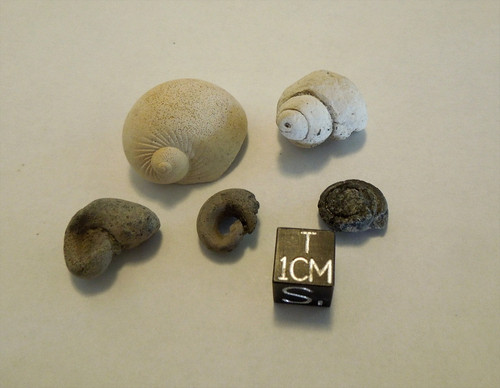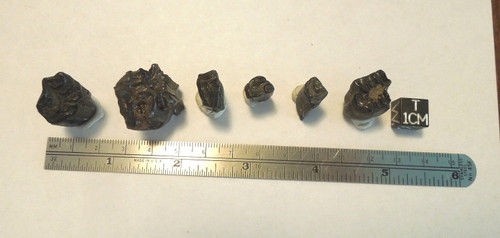Bone Valley Fossil Pay Dirt Box : now you can have the experience of hunting for fossils in Florida's famous Bone Valley formation, without having to brave the muddy water, snakes, and alligators. This box is loaded with fossils from the rich Miocene/Pliocene/Pleistocene deposits of marine and land fauna that roamed the Earth between 13,000 and 23,000,000 years ago.
During the Miocene period (approx. 5 - 20 million years ago), most of Florida was under the sea and the entire area was a thriving breeding ground for many species of marine animals, including the apex predator Megalodon species of "mega shark". Sharks hunted on ancestors of today's whales, dolphins, and manatees. The bones and teeth of these animals are found as fossils in the south-central Florida deposits of the Bone Valley formation.
During the Pliocene to Pleistocene periods (approx. 13,000 to 5,000,000 years ago), the Bone Valley region was home to a rich diversity of megafauna, including Mammoth, Mastodon, Sabre-tooth Cat, Dire Wolf, Giant Sloth, and the extinct ancestors of today's horses, camels, bison, bear, wolf, and others. The bones of these animals are found in mixed deposits, often alongside Miocene era marine remains.
The Bone Valley formation is in south central Florida and the richest fossil deposits are found along the Peace River in Polk, Hardee, and Desoto counties. The Peace River has coffee-black waters that are infested with snakes and alligators. During Florida's cool winters, the river levels are low and the reptiles are not active, so fossil hunters go out to search through the river beds and banks looking for old bones and teeth. Fossil season runs during the dry months that are typically November through May or June when the springs rains start.
Fossil hunters and researchers from around the world come to Bone Valley, but now you can have the fossil deposits come to you. These fossil "paydirt" boxes contain a mix of dirt and fossils. Dig and sift through the dirt to find the fossil specimens. Then clean them off and test your identification skills to ID the different types of fossils.







